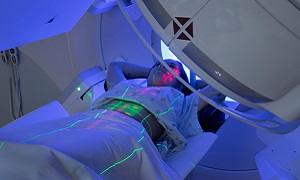Best Doctors in India for Squamous Cell Carcinoma Treatment
Best Hospitals in India for Squamous Cell Carcinoma Treatment
CK Birla Hospital, Gurugram
- City: Gurugram, India
Hospital Highlights:
- The CK Birla Hospital in Gurugram is a NABH-accredited multi-specialty hospital.
- The hospital strives to increase the quality of healthcare by focusing on UK NHS nurse and midwife training requirements. Policies and practices derived from the National Institute for Health and Treatment Excellence (NICE) recommendations in the United Kingdom ensuring that a strong focus on safety, high-quality clinical care, and sanitation is maintained.
- The hospital’s cutting-edge technology and facilities allow for real-time communication and seamless collaboration among caregivers, ensuring accuracy and the best possible results. Those with foreign experience and accreditations make up part of the hospital’s team of clinicians.
KIMS Hospital, Hyderabad
- City: Hyderabad, India
Hospital Highlights:
- KIMS Hospital (a brand name of Krishna Institute of Medical Sciences) is one of the largest and best multi-speciality hospitals in Hyderabad. The hospital provides various treatments to an enormous number of patients.
- The hospital has a capacity of more than 3000 beds. KIMS Hospitals offers different healthcare services in more than 25 specialities and super specialities.
- The hospital is equipped with modern medical equipment and technology. It has robotic equipment to provide minimal invasive techniques for patients.
- The hospital is aimed at providing world-class healthcare facilities and services at an affordable cost for patients.
- The various specialities and departments of the hospital include neurosciences, gastroenterology & hepatology, robotic science, reproductive sciences, dental science, oncological sciences, organ transplantation, heart and lung transplantation and mother and child care.
Fortis Hospital, Shalimar Bagh
- City: New Delhi, India
Hospital Highlights:
- Fortis Hospital in Shalimar Bagh is a multi-super specialty hospital that strives to provide world-class patient care by leaving no stone unturned.
- Fortis, Shalimar Bagh, with 262 beds and a 7.34-acre footprint, provides the best level of medical care through its team of doctors, nurses, technicians, and management professionals.
Reliance Hospital, Mumbai
- City: Mumbai, India
Hospital Highlights:
- Reliance Hospital is one of the best super-specialty care hospitals in Navi Mumbai.
- The main purpose of this hospital is to become a trustworthy place for the best health and hope for society. The hospital is well connected to the suburbs of Mumbai and Navi Mumbai.
- The hospital has various specialty departments, viz., Accident & Emergency, Anesthesiology, Dental Services, Dermatology, Diabetology, Dietetics Nutrition, Endocrinology, ENT, Gastroenterology, General Surgery, Gynaecology And Obstetrics, Hepato Pancreato Biliary Surgery, Infectious Disease, Internal Medicine, Interventional Radiology, Laboratory Medicine, Minimal Access Laparoscopic Surgery, Nephrology, Neurosciences, Opthalmology, Orthopaedics, Paediatrics, Pain Management Palliative Care, Physical Medicine Rehabilitation, Plastic And Reconstructive Surgery, Psychiatry, Pulmonary Medicine, Radiology, Rheumatology, Transplant, Urology Andrology, Vascular Surgery
Lilavati Hospital & Research Centre, Mumbai
- City: Mumbai, India
Hospital Highlights:
- Lilavati Hospital & Research Centre is India’s premier multi-speciality tertiary care hospital and has been recognised as a global medical excellence centre.
- Lilavati Hospital & Research Centre has built an unrivalled level of trust with its patients over the years, thanks to a solid foundation that comprises cutting-edge facilities, the best medical competence, research, education, and charity endeavours.
- The hospital is quite proud of the fact that it now serves patients from all kinds of backgrounds, not just from the United States but from all around the world.
- The hospital has a total of 323 beds, one of the largest Intensive Care Units (ICUs), 12 Operation Theatres with modern amenities, over 300 consultants, and almost 1,800 personnel.
Squamous Cell Carcinoma
Squamous Cell Carcinoma is a common form of skin cancer, which is found in areas of the body that have been damaged by the sun’s UV rays or tanning beds. The exposed skin can include skin in the head, neck, chest, upper back, lips, ears, legs and hands.
Unlike other types of skin cancer, Squamous Cell Carcinoma (SCC) is a slow-growing skin cancer. It can however spread to tissues, bones as well as the lymph node, where it can become quite difficult to treat. Although usually not life-threatening, it can be quite aggressive. It can however be easy to treat if it is caught early. If it is left untreated, Squamous Cell Carcinoma of the skin might grow large and spread to various parts of the body, which can lead to various complications.
Symptoms
Squamous cell carcinoma of the skin usually occurs on sun-exposed skin, such as the scalp, the backs of your hands, your lips or your ears. However, it might also occur anywhere on the body, including inside your mouth or the bottoms of your feet. It may even occur in your genitals.
It can have several signs and symptoms which include:
- A firm and red nodule
- A new sore or raised area on an old scar or an ulcer
- A flat sore with a scaly crust
- A red and raised patch or wart-like sort on or in the anus located on your genitals.
Causes and risk factors
Mutations that occur in skin cell DNA leads to skin cancer. These changes can cause abnormal cells to multiply out of control. When this occurs in the squamous cells, the condition is termed as SCC.
UV radiation is the most common known cause of DNA mutations, leading to skin cancer. UV radiation can come from sunlight or tanning lamps and beds.
Though frequent expose to UV radiation increases the risk of skin cancer, the condition can also develop in people who are not spending much time in the sun or tanning beds. Such people might be genetically predisposed to skin cancer or they might be having a weaker immunity, which increases their likelihood of getting skin cancer. Patients who are receiving radiation treatments for other skin conditions can also be at risk of skin cancer.
Having fair skin, light-colored hair and blue, green or gray eyes is a risk factor for SCC. Having long-term exposure to UV rays is the most common risk factor. Few other risk factors include living in sunny regions or at a high altitude, having a history of being exposed to chemicals, having a history of multiple severe sunburns.
Diagnosis
Tests and procedures which are used for diagnosis of squamous cell carcinoma of the skin can include:
Physical exam
Removing a sample of tissue for testing
For confirming squamous cell carcinoma of the skin diagnosis, your doctor will be using a tool to cut away some or the entire suspicious skin lesion also called a biopsy. The type of skin biopsy which you undergo depends on your particular situation. The tissue is sent to a laboratory for examination.
Treatment
Treatment is based on multiple factors, such as the extent as well as the severity of your cancer, your age, your overall health, the location of cancer.
There are many treatments that can be performed as in-office procedures. These include:
Mohs’ micrographic surgery
In Mohs’ micrographic surgery, your doctor removes the abnormal skin using a scalpel, along with some of the surrounding tissue. This sample is then immediately examined using a microscope. If cancer cells are found in the sample, this process is repeated until no cancer cells are found.
Electrosurgery
Electrosurgery, which is also known as curettage and electrodesiccation, involves scraping off cancer as well as burning the skin for killing cancer cells. Typically this process is done more than once for ensuring thorough treatment as well as complete removal of cancer.
Excisional surgery
Excisional surgery, during which your doctor removes your cancer cells as well as a thin layer of healthy skin, in the surrounding area. Stitches are used for closing the wound. After this, the sample is sent to a laboratory to ensure the entire cancerous area has been removed.
Radiation
Some doctors might also use photodynamic therapy, or laser surgery and topical medications for treating SCC. However, the US Food and Drug Administration have not approved such methods for treating it.
Once SCC has been treated, it is important that you attend the follow-up visits with your doctor. SCC can return and therefore, it is important that you monitor your skin for any precancerous or cancerous areas at least once a month.
Prevention
To reduce the risk for SCC, one can follow these tips:
- Limiting exposure to the sun, especially during 10 am and 4 pm
- Wear sunscreen while going out in the sun
- Wear sunglasses that provide UV ray protection
- Wearing a hat and covering the skin while working outside
- Check the skin every month for any abnormal growths
- Protecting the skin during winter as winter rays can be especially dangerous
- Avoid tanning beds and lamps
- Consult a dermatologist once a year, for a full-body skin check








